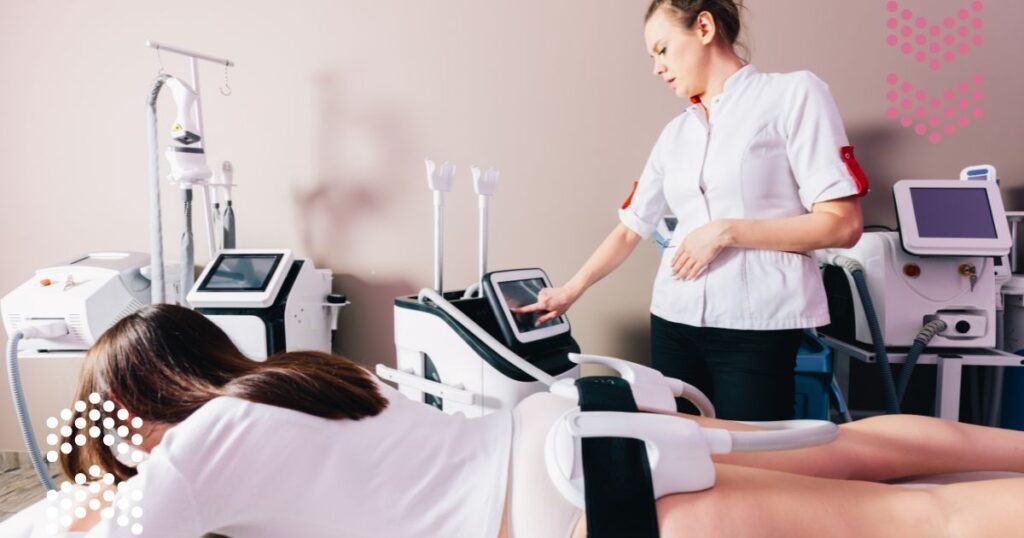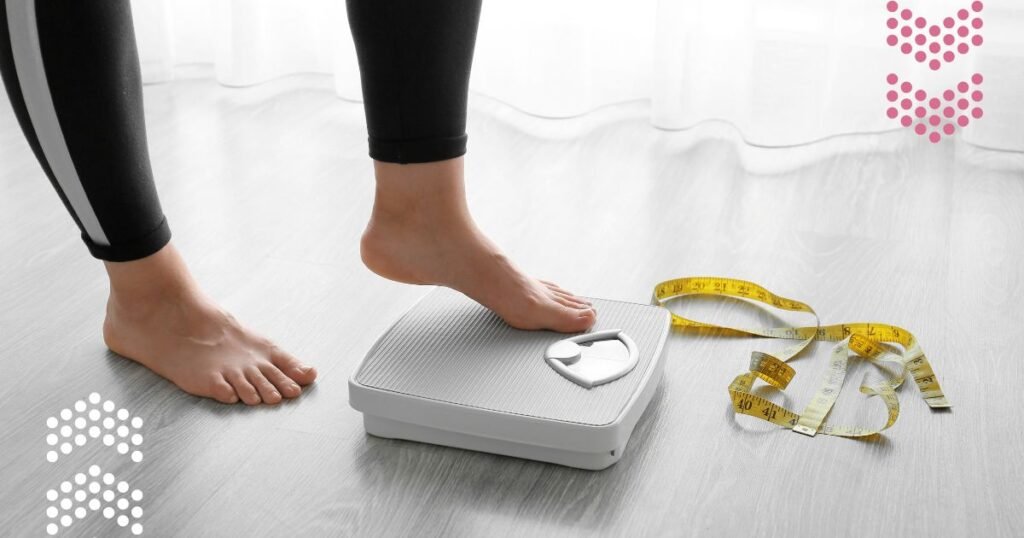Muscle Mass and Metabolism in Women
Muscle mass plays a crucial role in determining how effectively our bodies can burn calories and maintain an efficient metabolism. For women, this aspect becomes even more vital, as muscle mass directly influences metabolic rates and fat-burning potential. Muscle mass affects how many calories your body burns at rest and during physical activity, making it a key factor in successful weight management and long-term health.
Unfortunately, many women still overlook the importance of muscle mass in their fitness routines, opting instead for cardio-heavy workouts. However, focusing on building muscle not only helps burn fat but also boosts metabolism and provides a host of other health benefits. In this article, we will explore how muscle mass impacts metabolism and enhances fat-burning efficiency in women. We’ll also discuss strategies for building and maintaining muscle to achieve a healthy, lean physique.
Understanding Metabolism: How It Works in Women
Definition of Metabolism
Metabolism refers to the chemical reactions that occur in your body to maintain life. This includes processes like breaking down food into energy and using that energy for everything from physical movement to brain function. Your metabolic rate, or the speed at which these reactions happen, determines how quickly or slowly your body burns calories.
For women, metabolism can fluctuate due to various factors, including age, hormonal changes, and muscle mass. Understanding metabolism’s role in weight management can empower women to make better decisions regarding their fitness and nutrition routines.
Basal Metabolic Rate (BMR)
Basal Metabolic Rate (BMR) is the number of calories your body needs to perform basic life-sustaining functions, such as breathing, circulating blood, and maintaining body temperature, all while at rest. Muscle mass is a key factor in determining BMR. Because muscle tissue burns more calories than fat tissue, women with higher muscle mass generally have a higher BMR, meaning they burn more calories even when they’re not physically active.
Incorporating strength training and muscle-building exercises into a workout routine is essential for women looking to increase their BMR and burn fat more efficiently. This leads to easier weight management and a healthier overall lifestyle.
Resting Metabolic Rate (RMR) Differences
Resting Metabolic Rate (RMR) is another crucial factor in how your body uses energy. RMR measures how many calories your body burns at rest, but unlike BMR, it takes into account factors like digestion and daily activity. Women with higher muscle mass have a higher RMR, allowing them to burn more calories throughout the day, even while performing simple activities like walking or sitting.
For those aiming to enhance their fat-burning potential, maintaining or increasing muscle mass through targeted exercises can have a long-lasting impact on metabolic rates and calorie expenditure. Thus, muscle-building isn’t just about aesthetics; it’s also a smart strategy for improving overall metabolic health.
Muscle Mass and Fat-Burning Efficiency: The Science
Muscle’s Role in Fat-Burning
Muscle tissue is metabolically active, which means it burns calories even when you’re not working out. This is why people with more muscle mass typically have a faster metabolism. The more muscle you have, the more calories you burn, even while sitting or sleeping. In contrast, fat tissue burns very few calories.
When it comes to fat-burning efficiency, muscle mass is a game-changer. Women who increase their muscle mass through resistance training or weightlifting are able to burn more fat over time compared to those who only focus on cardio workouts. While cardio is effective for short-term fat loss, muscle building offers sustainable, long-term results by increasing resting calorie expenditure.
Impact on Thermogenesis
Thermogenesis refers to the production of heat in the body, which is a direct byproduct of burning calories. Muscle mass significantly contributes to thermogenesis, as it requires more energy to sustain itself compared to fat. When you build muscle, your body’s natural thermogenesis increases, leading to higher calorie burn and more efficient fat loss.
Women who want to increase their fat-burning efficiency should focus on incorporating strength-training exercises that promote muscle growth. This not only boosts thermogenesis but also helps maintain a lean, toned physique over time.
Long-Term Fat Loss
Many women find themselves frustrated by the “yo-yo” effect of losing weight and then quickly gaining it back. This often happens when weight loss is achieved primarily through calorie restriction and cardio without focusing on muscle preservation. When muscle mass is lost, metabolic rates drop, making it harder to maintain fat loss.
Incorporating muscle-building exercises into a fitness routine is a sustainable way to achieve long-term fat loss. With more muscle mass, women can maintain a higher metabolism, which helps burn calories more efficiently and keeps the fat off for good.
Women-Specific Considerations for Building Muscle
Hormonal Influences
Hormones play a significant role in how women build muscle and store fat. Estrogen, in particular, affects fat distribution, with many women tending to store more fat around the hips and thighs. However, strength training can counterbalance the hormonal effects by promoting muscle growth in these areas, leading to a more toned appearance.
Another important hormone for muscle growth is testosterone, although women have lower levels compared to men. While it may take longer for women to see significant muscle gains, strength training and proper nutrition can still lead to impressive results.
Differences Between Men and Women
Men and women build muscle differently due to hormonal differences, primarily testosterone. While men typically gain muscle more quickly, women can still build muscle at a steady pace with the right training and nutrition plan. Additionally, women often have to work harder to achieve muscle hypertrophy, or muscle growth, due to lower levels of anabolic hormones.
The good news is that women don’t need to fear “bulking up.” Instead, muscle growth in women leads to a leaner, more toned appearance that enhances fat-burning potential and boosts overall metabolism. It’s a common myth that women will become too muscular if they lift weights; in reality, the opposite is true—muscle building is the key to fat loss.
Challenges Faced by Women
One of the main challenges women face when trying to build muscle is the misconception that lifting weights will make them appear bulky or too muscular. However, building muscle is essential for increasing metabolism and burning fat, and it leads to a leaner, more toned appearance rather than bulkiness.
Another challenge is the focus on cardio-heavy workouts, which often leads women to neglect strength training. While cardio is important for heart health, it doesn’t have the same fat-burning benefits as muscle-building exercises. To truly enhance metabolism, women should prioritize a balanced fitness routine that includes both cardio and strength training.
The Benefits of Muscle Mass Beyond Fat Loss
Improved Body Composition
Increasing muscle mass helps improve overall body composition by increasing the proportion of lean body mass to fat mass. This results in a more toned, athletic appearance that many women strive for. Beyond aesthetics, improving body composition has long-term health benefits, such as reduced risk of metabolic diseases and better physical performance.
Enhanced Strength and Endurance
With more muscle mass comes increased strength and endurance. This not only improves physical performance in daily activities but also enhances workout efficiency. Women who build muscle through strength training often find that they have greater stamina and are able to lift heavier weights or perform more challenging exercises over time.
Health Benefits
Building muscle provides numerous health benefits beyond fat-burning. For example, it helps improve bone density, reducing the risk of osteoporosis, which is particularly important for women as they age. Additionally, maintaining muscle mass helps protect joints, reducing the likelihood of injury.
Muscle mass also plays a key role in cardiovascular health. Studies have shown that women who engage in regular strength training have better heart health and lower risks of conditions like hypertension and diabetes.
How to Build Muscle to Boost Metabolism
Strength Training Basics
To build muscle, it’s essential to engage in strength training exercises. These can include bodyweight exercises like squats and lunges, or weightlifting exercises using dumbbells, barbells, or resistance bands. The key is to challenge your muscles by gradually increasing resistance, also known as progressive overload.
Women should aim to incorporate strength training into their fitness routine at least 2-3 times per week. Consistency is crucial for muscle growth, and over time, you’ll notice improvements in strength, endurance, and overall body composition.
Progressive Overload
Progressive overload is the practice of gradually increasing the weight, reps, or intensity of your workouts over time. This ensures that your muscles are continually challenged, which promotes muscle growth and prevents plateaus. Without progressive overload, muscle growth will stall, and fat-burning efficiency may diminish.
For women looking to build muscle and boost metabolism, progressively increasing the difficulty of their workouts is a must. This can be achieved by increasing the amount of weight lifted, adding more sets or reps, or reducing rest time between exercises.
Balancing Strength and Cardio
While strength training is key to building muscle, it’s important to balance it with cardio to ensure overall fitness. Cardio exercises like running, cycling, or swimming improve heart health and endurance. However, relying solely on cardio for fat loss can lead to muscle loss, which decreases metabolism.
The best approach is to combine strength training with moderate cardio exercises to enhance fat-burning while preserving muscle mass. This balance will maximize your metabolism and lead to more effective weight loss results in the long term.
The Role of Nutrition in Muscle Mass and Fat-Burning
Protein Requirements for Women
Protein is a critical nutrient for muscle growth and recovery. Women who engage in strength training need to ensure they’re consuming enough protein to support muscle repair and growth. Sources like chicken, fish, eggs, tofu, and legumes are excellent options.
For optimal results, women should aim to consume around 1.2 to 2.2 grams of protein per kilogram of body weight daily, depending on activity levels. This ensures muscles have the building blocks they need to grow, enhancing both metabolism and fat-burning.
Macronutrients for Muscle Growth
Beyond protein, a balanced intake of carbohydrates and fats is essential for muscle growth and metabolism. Carbohydrates provide energy for your workouts, while healthy fats support hormonal balance, which is crucial for muscle growth and recovery.
A balanced diet that includes all three macronutrients—proteins, carbs, and fats—ensures that your body has the fuel it needs to perform at its best during workouts and recover properly afterward. This leads to greater muscle growth and improved fat-burning efficiency.
Supplements
While supplements shouldn’t replace whole foods, they can be beneficial in supporting muscle growth and fat loss. Protein powders, for example, are convenient ways to meet daily protein goals. Branched-chain amino acids (BCAAs) are also useful for preserving muscle during intense workouts.
However, it’s important to choose high-quality supplements and use them in conjunction with a healthy, balanced diet. Supplements should enhance your nutrition, not replace it.
Age and Muscle Mass: Challenges and Strategies for Women
Muscle Loss with Aging
As women age, muscle mass naturally decreases in a process called sarcopenia. This decline in muscle mass contributes to a slower metabolism, which can lead to increased body fat if not addressed. Women over 35 often notice changes in body composition and a harder time losing fat due to muscle loss.
Building and maintaining muscle mass becomes even more important as women age. Incorporating strength training into your routine and ensuring adequate protein intake can help prevent muscle loss and keep metabolism active, even as you grow older.
Strategies for Preventing Muscle Loss
Preventing muscle loss involves a combination of regular strength training, proper nutrition, and adequate recovery. Women should focus on resistance training exercises that target all major muscle groups, including legs, back, chest, and arms.
Ensuring sufficient protein intake is also crucial, as muscle repair and growth rely on it. Older women may also benefit from supplements like creatine or collagen to support muscle retention. Staying active, prioritizing strength training, and maintaining a balanced diet are the best ways to combat age-related muscle loss.
Building Muscle Post-35
Women over 35 may face additional challenges when building muscle due to hormonal changes, particularly decreased estrogen and testosterone levels. However, with consistent effort, muscle growth is still achievable at any age. Strength training, combined with a high-protein diet and adequate rest, will support muscle-building efforts and help prevent metabolic slowdown.
Women in their 40s, 50s, and beyond can still reap the benefits of muscle mass for metabolism and fat-burning. The key is to stay consistent with workouts and adapt nutrition strategies to support muscle growth and recovery.
Case Study: Success Stories of Women Who Boosted Their Metabolism Through Muscle Gain
Several women have experienced incredible transformations by focusing on muscle-building exercises. Take, for example, Sarah, a 45-year-old woman who had struggled with weight loss for years. After shifting her focus from cardio to strength training, Sarah saw a significant increase in her metabolism and a noticeable reduction in body fat.
By consistently working out with weights and ensuring she met her protein intake goals, Sarah was able to achieve a leaner, more toned body. Her energy levels increased, and she no longer felt the frustration of fluctuating weight.
Similarly, Jane, a 37-year-old mother of two, discovered that by adding strength training to her fitness routine, she was able to burn fat more efficiently and regain control over her body after years of focusing solely on cardio. These real-life examples highlight the power of muscle mass in transforming metabolism and body composition.
Conclusion: The Power of Muscle Mass for Women’s Fitness Goals
Muscle mass plays a critical role in enhancing metabolism and fat-burning efficiency in women. By focusing on strength training and incorporating the right nutrition, women can enjoy long-term health benefits, better fat-burning potential, and improved body composition.
For more detailed information on how muscle mass, age, and hormones affect women’s metabolism, you can explore our in-depth article on Factors Affecting Women’s Metabolism.
Want to learn more about how ShapioX can help you achieve your fitness goals? Explore our recipes, resources, and fitness tools designed specifically for women. For more expert advice on healthy weight loss and maintaining muscle mass, visit us today!
Explore Our Website for More
At ShapioX, we offer a wide range of resources to help women achieve their fitness goals. Whether you’re looking for diet and weight loss tips or expert advice on building muscle, we have everything you need to succeed. Visit our website to learn more about how we can support your fitness journey.


